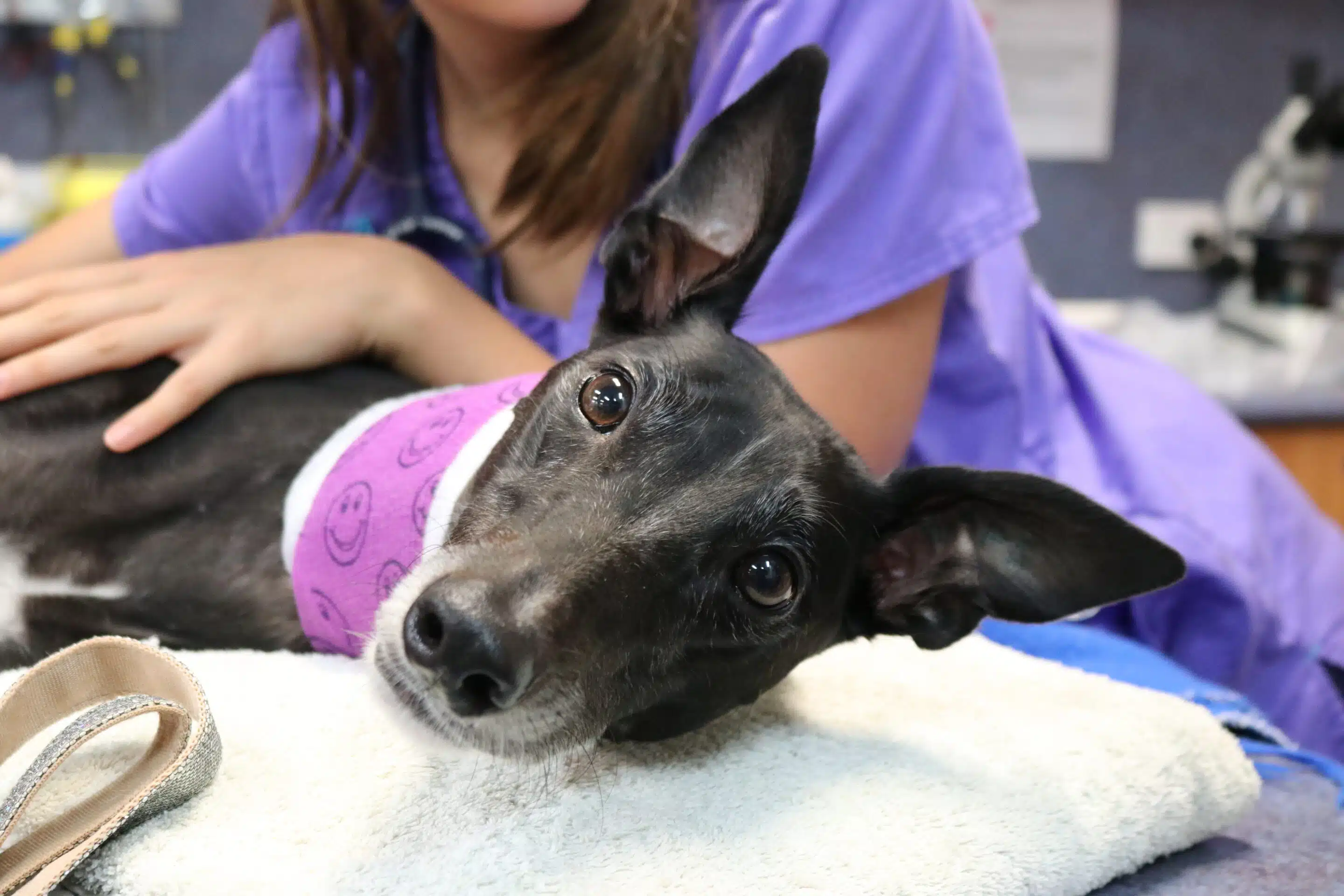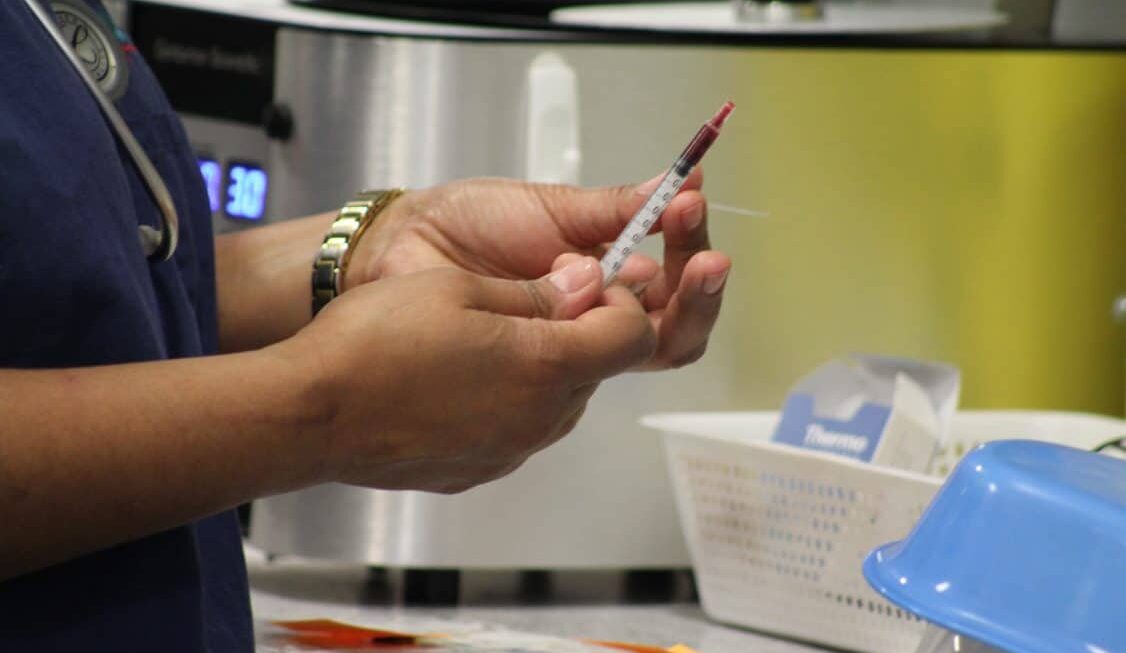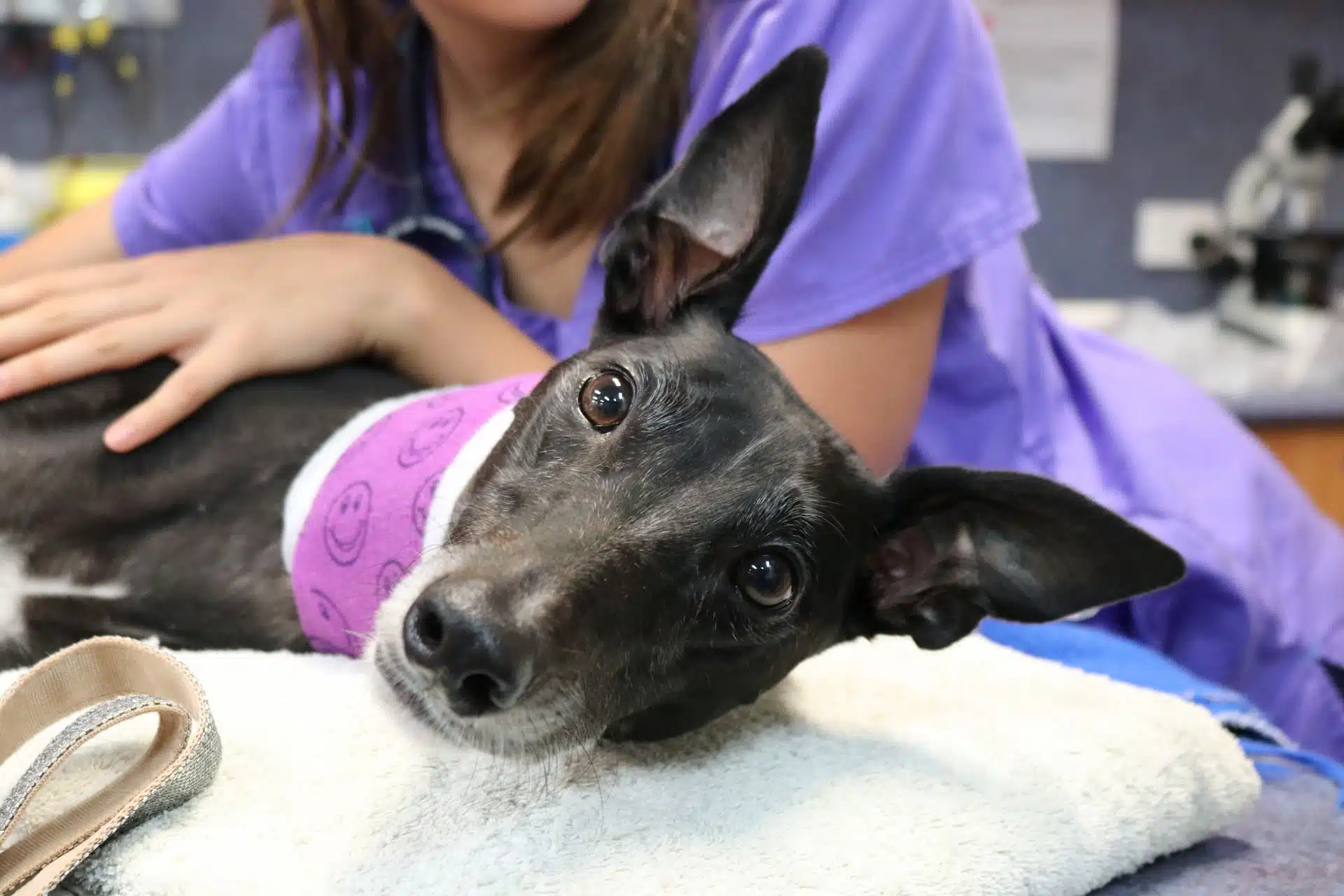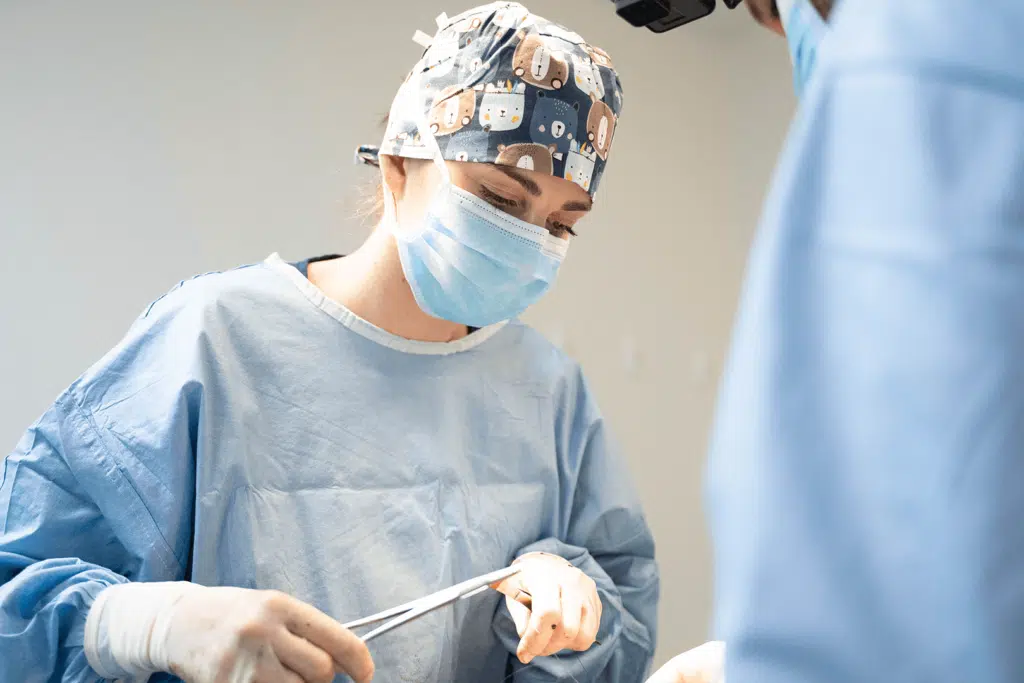Our article on canine and feline transfusion medicine covered many important factors to consider when performing transfusion therapy. But before you even get started with transfusion medicine, you’ll also need to ensure you have a supply of blood or plasma that’s correctly collected, stored, and ready to be safely transfused. We’ll guide you through the process of blood collection in both canine and feline patients, proper preparation and storage, and the correct method for cross-matching in dogs and cats to minimise the risks of a transfusion reaction.
Canine Blood Collection
- Instruct assistants regarding restraint of dog and mixing of blood bag.
- Sedate donor (optional). 0.1-0.2mg/kg butorphanol IV
- Depending on individual preference sit dog or position it in lateral recumbency.
- Apply lidocaine gel to skin over jugular vein and aseptically prepare jugular vein.
- Place blood bag needle into jugular vein and allow blood to flow into blood bag whilst gently mixing bag. OR you can place a 14 guage catheter with a port attached and pass the needle through the port. The blood bag should be held well below the level of the patient to allow gravity to enhance flow rates. If the flow rates are still slow, consider occluding both jugular veins.
- Ideally weigh blood bag during collection to ensure that appropriate collection volume is not exceeded (100 ml = approximately 100 g). Whenever possible, attempt to collect the appropriate amount of blood (450ml +/- 10%) for the volume of anticoagulant in the bag (63 ml).
A short video detailing the process behind blood collection at our PICU blood bank.
Feline Blood Collection
- Instruct assistants in positioning and restraint of cat and collection of blood with inversion of syringe to mix contents. Applying excessive vacuum to the syringe will cause collapse of the jugular vein and reduce blood flow.
- Sedate donor. Various options are available for cats, with 3mg/kg alfaxalone + 0.2mg/kg butorphanol often being chosen and topped up alfaxalone IV if needed. Alternatively, Ketamine 5mg/kg and midazolam 0.2mg/kg SQ can be used based on the individual patient and preference of the veterinarian.
- Prepare 5 x 10ml syringes with 1 mls CPD in each syringe. Place a small extension or T-piece onto syringe with 21-g butterfly catheter – flush the line with the CPD anticogaulant
- Place intravenous catheter into cephalic vein and set up intravenous fluids (saline 50-100 ml to be administered over 1 hour).
- Position the cat in lateral recumbency with soft hand towel placed under the neck.
- Aseptically prepare jugular vein and place butterfly catheter.
- Collect blood slowly into syringe, regularly inverting syringe during collection in order to mix contents. Consider manually occluding both jugular veins if flow rate is slow.
- Whenever possible, attempt to collect the appropriate amount of blood (45 ml) for the volume of anticoagulant in the syringe (5 ml), making the total volume of blood and anticoagulant 50 ml.
- Transfer into 100mls NaCl bag with saline removed. Attach blood filter and your transfusion is ready to go!
Now that you’ve collected blood and have a supply at your disposal (or stored away safely for a future case), we’ll now discuss blood typing in both dogs and cats, and outline the two correct process for obtaining a minor or major cross-match. Knowing how to properly cross-match will reduce the chance of a reaction in your patient and is especially important in all cats, and in dogs that have previously received a transfusion.
Blood Typing in Dogs
Dogs have around 13 different blood groups of which 7 are recognized with the dog erythrocyte antigen system (DEA). These are DEA 1.1,1.2, 1.3, 4, 5, and 7. Not all of them are overly important when it comes to causing transfusion reactions. DEA 1.1 is the most important, with 1.2 and 7 falling close behind.
Luckily, dogs do not tend to react strongly to the first blood transfusion given that they have a low incidence of naturally occurring antibodies to red blood cells, meaning that a cross match is ideal, but not strictly necessary. However, there still is a small chance that a dog could have an incompatible cross match despite never having received a previous transfusion, so it is best practice to perform a cross-match if possible and time permits.

Blood Typing in Cats
Accurate blood typing in cats is essential, as transfusion reactions are far more likely and can prove to be fatal. There are 3 blood groups in cats:
- Type A (75 – 95% of cats): If a type A cat receives type B blood, the red cells will be destroyed within 2 days
- Type B: If a type B cat receives type A blood, an acute, often fatal transfusion reaction occurs. The red cells will survive a maximum of 1 hour
- Type AB (<0.5% of cats): Type AB cats have no alloantibodies. They should ideally receive type AB blood otherwise they should get type A blood. If they are given type B blood, the donor blood will react strongly against the A of the recipient and a “graft vs host” reaction will occur
There is also the recently discovered Mik antigen. A cat without the Mik red cell antigen can have naturally occurring anti-Mik alloantibodies, which can result in an acute haemolytic transfusion reaction after an AB-matched blood transfusion if the donor cat is Mik +ve. Cross matching will detect Mik incompatibility.
Cross-Matching in Dogs and Cats – Traditional Method
- Donor blood in EDTA anticoagulant is centrifuged at 3000 rpm for 10 min
- The supernatant (plasma and buffy coat layer) is removed and the erythrocytes are washed by resuspension in saline
- The cells are recentrifuged and the supernatant removed
- The erythrocytes are resuspended in saline to make a 3–5% solution
- Two drops of cell suspension are placed in contact with heparinised plasma from the recipient (1–2 drops) either on a slide or preferably in test tubes or well plates
- The cell/plasma mixture is assessed for haemolysis (diffuse reddening of solution, which fails to settle out) or agglutination (granular appearance), which indicates that a cross-match reaction has occurred
The minor cross-match is performed in the same way with recipient cells and donor plasma.

Cross-Matching in Dogs and Cats – Rapid Slide Agglutination Method
- Collect blood into an EDTA tube from recipient and donor. Alternatively for the donor sample, a segment of anticoagulated blood from the donor blood tubing may be used
- Centrifuge tubes to settle the red blood cells, remove the supernatant and transfer to a clean, labelled tube
- Prepare three slides labelled as major, minor and recipient control
- Place 1 drop red blood cells and 2 drops plasma onto each slide according to the following
- » Major crossmatch = donor red blood cells + recipient plasma
- » Minor crossmatch = recipient red blood cells + donor plasma
- » Recipient control = recipient red blood cells + recipient plasma
- Gently rock the slides to mix the plasma and red cells and examine for haemoagglutination after 1-5 minutes (presence of agglutination indicative of incompatibility); recipient agglutination will invalidate results
Cats do have naturally occurring alloantibodies and so should always be blood typed or crossmatched prior to a transfusion. Cat AB blood typing cards are available commercially now. You can purchase these kits for use in your practice for quick and easy cross-matching in dogs and cats, or send blood to a lab for typing.
Now that you know the basics on blood collection and cross-matching in dogs and cats, find out more about transfusion medicine in our AEA Guide to Transfusion Medicine and head over to the VetAPedia subject library to access free downloadable PDFs on transfusion medicine and more to use in your clinic.




